After Manchester United’s Dean Henderson returned to his parent club following a very successful two-year loan spell at Sheffield United, they were left without a number one goalkeeper. The Blades decided to replace one young English goalkeeper with another, in the form of Aaron Ramsdale. The former Bournemouth man joined for a fee of over £18milion. Both young keepers rank among the best U23 goalkeepers within Europe’s top five leagues.
This tactical analysis will look at how Ramsdale can improve Sheffield United. How he fits into his new team’s tactics and how his strengths can improve their defence. Although still 22-years-old, Ramsdale was one of the best performing goalkeepers in the Premier League last season. A real stand-out in a team that was eventually relegated.
Ramsdale or Henderson?
Henderson has now returned to Manchester United, whether he’ll leave on loan again or fight for the number one spot is yet to be revealed. Both keepers being so young, and English, they were constantly compared throughout the previous season. Evident in our data analysis on the best young goalkeepers in the top five leagues, both Henderson and Ramsdale are great shot-stoppers but need to improve their sweeping abilities.
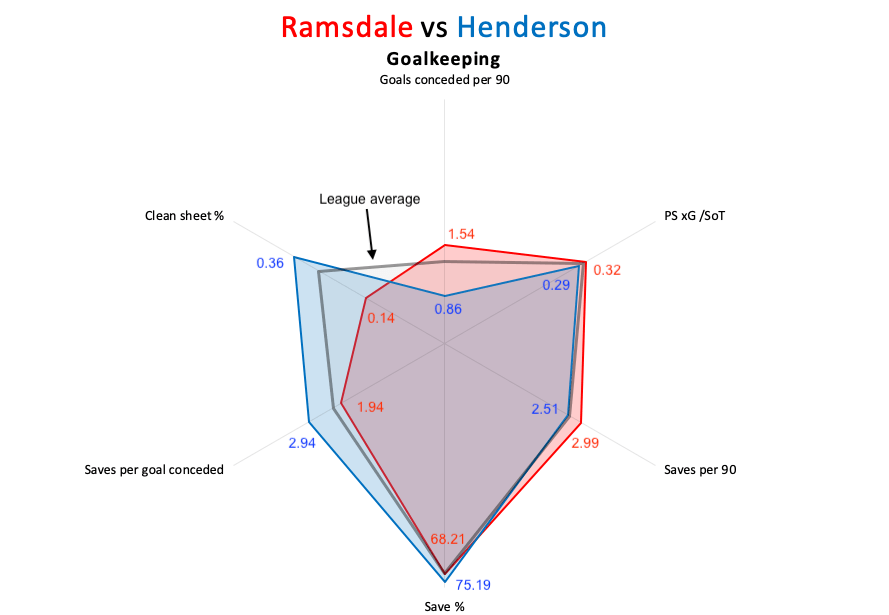
The above graph shows both keepers goalkeeping abilities, along with the leagues average in each stat. Straight away, we can tell that Henderson played for a better team defensively than Ramsdale, who faced harder shots. The now Sheffield United player made 0.4 more saves than the league average and 0.48 more than Henderson, showing how easily his team allowed shots on his goal. With Sheffield United’s much better defence, Ramsdale’s stats are sure to improve in the upcoming season.
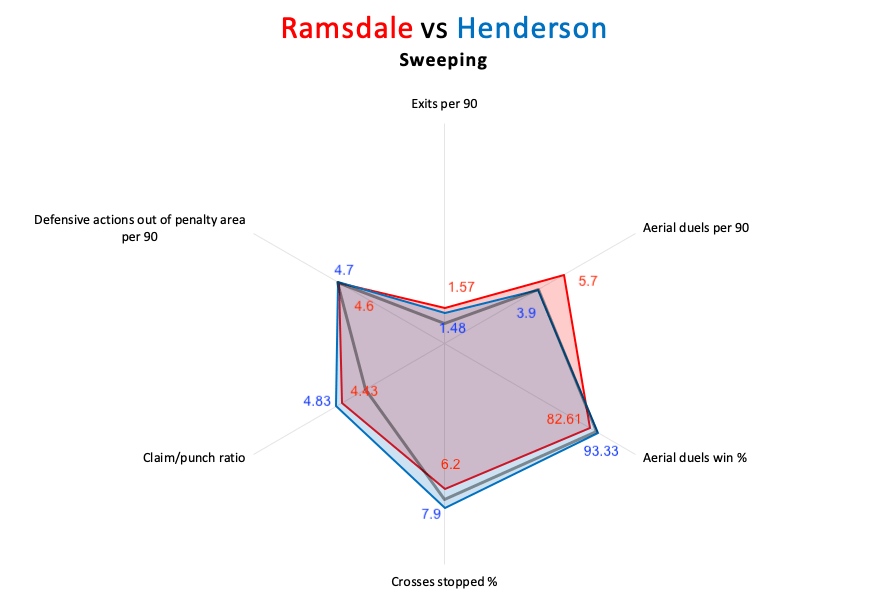
Both keeper’s sweeping stats are fairly similar and are around the league average for most. The number of exits both make per 90 is above the league average. Whilst Ramsdale makes a lot more aerial duels, but not winning as many as Henderson. In terms of stopping crosses, Ramsdale is below-average whilst Henderson is above. Interestingly, both have almost exactly the league average for defensive actions outside of their penalty box per 90. However, improving this area could improve their sweeping abilities massively.
Evidently, both keepers are very similar in their shot-stopping and sweeping abilities. However, we can take Henderson’s passing stats and compare them against Ramsdale’s to analyse if the latter can fit into his new team’s play-style.
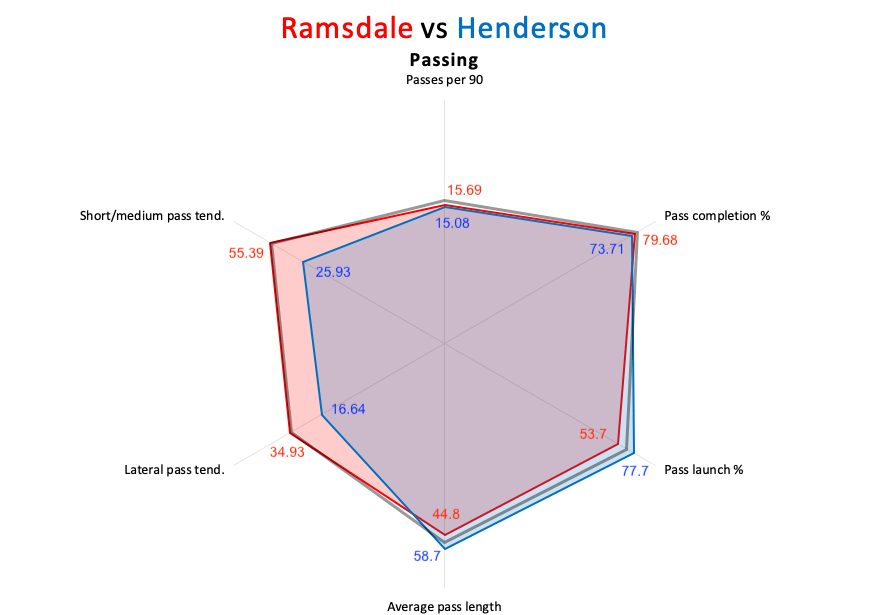
Sheffield United play a direct style of football, therefore being an excellent passer isn’t a necessity for a goalkeeper but rather a bonus. Both make a similar amount of passes per 90, with Ramsdale having a higher completion percentage. What is obvious in the stats is that Ramsdale is a much better passer. He launches his passes 24% less than Henderson and has an 18.29% more chance to play lateral passes. Ramsdale’s short pass tendency is 55.39% compared to Henderson’s 25.93%. Ramsdale will have no problem fitting in with his new team’s play-style, he is equally comfortable going long as he is playing short.
Last season, Sheffield United made 350.72 passes per 90 with a completion of 79% whilst Bournemouth made 334.97 passes with a completion of 80%, ranking them 13th and 15th in the league respectively. Similarly, Sheffield United’s average possession was 42.8% with Bournemouth having 43.7%, ranking them 17th and 16th in the league.
Ramsdale’s consistent shot-stopping
The 22-year-old, standing at 6’2”, is one of the best shot-stoppers under the age of 23 in the top five leagues. His positioning, reflexes and safe hands mean that he is extremely hard to beat. The below graph looks at the difficulty of shots faced and how many saved above/under expected.
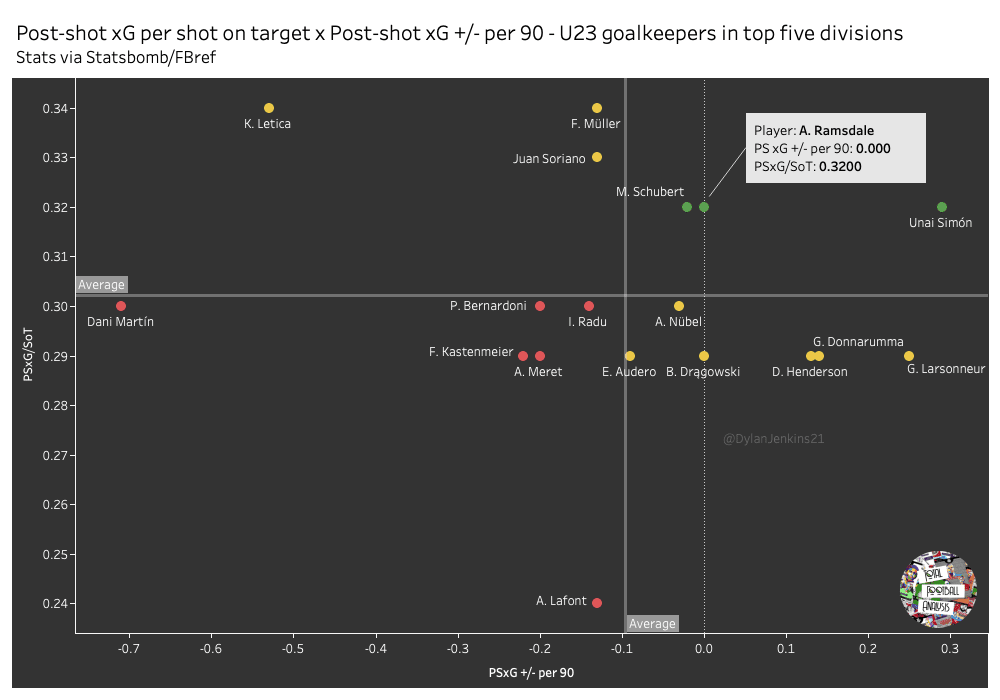
Ramsdale is one of just three goalkeepers who’s shot difficulty is above-average and have saved above the average too. The Englishman’s PS xG +/- is a respectable 0. Whilst he faced very difficult shots because of his team’s weak defence, a PS xG/SoT value of 0.32.
One of the best assets of his shot-stopping is his awareness to be in the optimum position to save shots. A goalkeeper’s positioning could be the difference between making a world-class save and not getting anywhere near the ball.
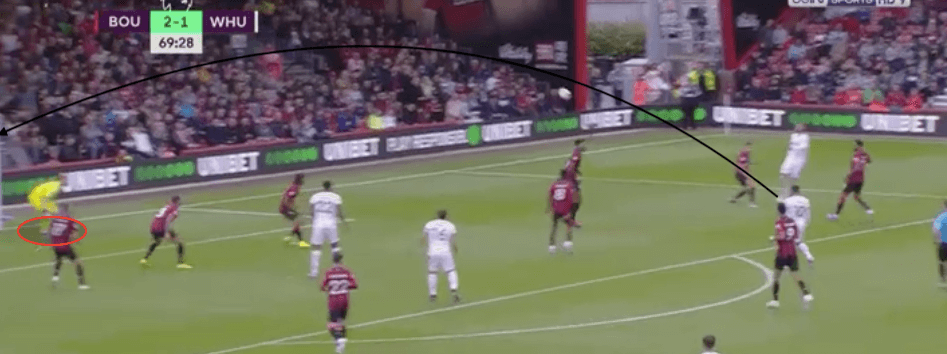
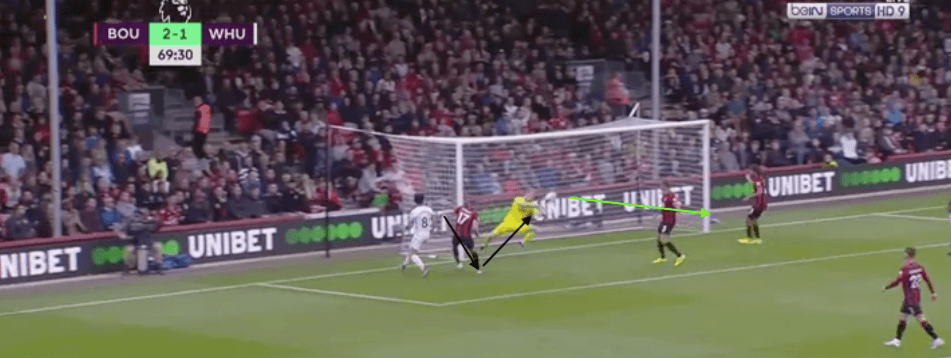
In the above example against West Ham, we see a prime example of Ramsdale’s positioning helping him make a critical save at a critical point in the match. As the cross comes in, the keeper is guarding his near post to ensure that any shot from the crossers position is covered. As the cross is delivered to the back post, Ramsdale uses his footwork to shuffle across the goal line to protect the other post. We can see that there are just two seconds between the cross being delivered and Ramsdale making the save. He does excellently to move behind the goal line to give himself more time to react to the downwards header, which he pushes to the side.
Ramsdale has a 68.21% save percentage, which on the face of things, isn’t great. However, the 22-year-old faces 4.86 shots per 90, making 2.99 saves, which is impressive. His save percentage is so low because logically, the more shots you face, the more chance you have of conceding.
His good positioning gives him a better chance of holding shots, rather than palming them out for a corner or throw-in, or even worse, spilling the ball straight to the opposition.
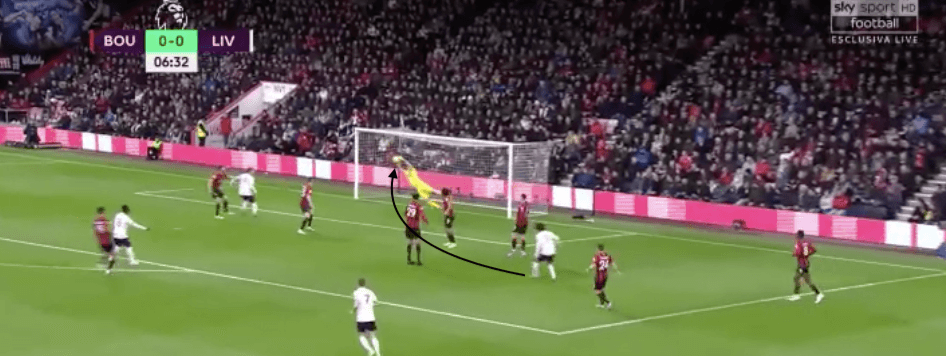
Against Liverpool, Mohammed Salah lines up a shot from the right side of the box. Ramsdale’s position is excellent, he’s guarding his near post, but he’s not too close to it. This enabled him to dive to his right without taking his feet too far off the ground. This gives him a better chance of catching the ball.
However, a goalkeeper with good positioning will only save shots that they can anticipate. A goalkeeper needs a good combination of positioning and reflexes. For example, if a shot takes a deflection that the keeper isn’t prepared for, then he needs to be able to react quickly, Ramsdale can.
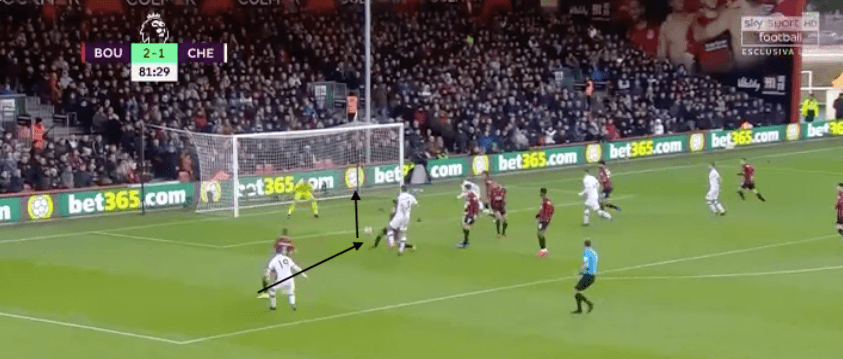
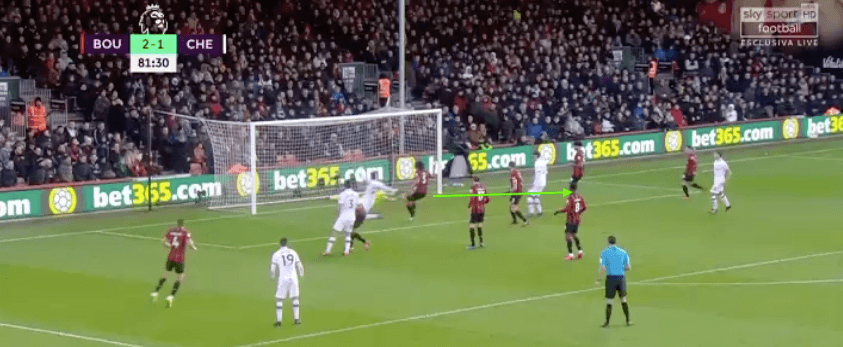
In the above example against Chelsea, Mason Mount drives a low shot-come-cross which Ramsdale will easily be able to deal with. But as the cross comes in, Marcos Alonso dangles out a foot and the ball takes a deflection. Ramsdale has to use his reflexes and footwork to readjust his body to make the save. Although his positioning in the first image is great, because he’s got most of the goal covered, his reflexes are what allows him to make the save, diving to his left.
Another aspect of shot-stopping where Ramsdale really exceeds is his one-on-one saves from tight angles. Although his technique isn’t always correct when facing central one-on-ones, his positioning to save from angles is exceptional. A prime example of this was against Tottenham striker Harry Kane.
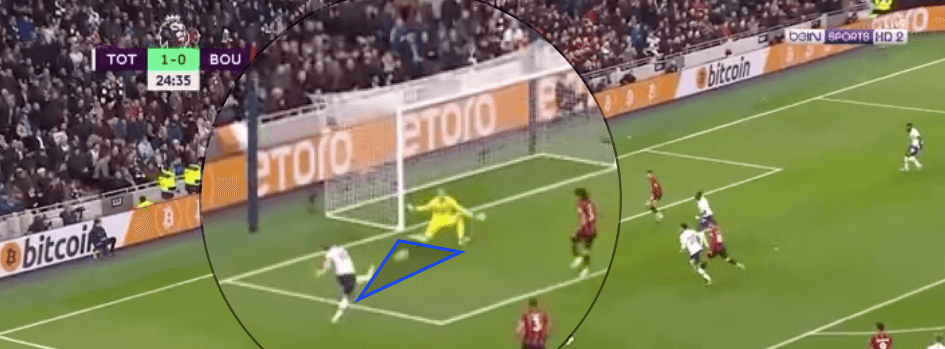
Here, we can see that Ramsdale is faced by Kane with no defenders near him. The 22-year-old uses the block technique which is the most effective way to prevent goals when facing a tight one-on-one. As we can see in the image, Ramsdale has most of the goal covered. Kane would have to find a powerful finish into the roof of the goal with his weaker left foot to score.
A passing style that will see him settle at Sheffield United
As previously mentioned, Ramsdale’s new team prefer a more direct approach, rather than building from the back. Evident in their surprising league position from last season, it clearly works. The Englishman makes 15.69 passes per 90 and he’s completed 79.68% of them. His passing style is varied. 34.93% of his passes are lateral and 55.39% of them are either short or medium.
The Sheffield United youth man can execute accurate long passes, meaning he’ll fit in very well at his new club.
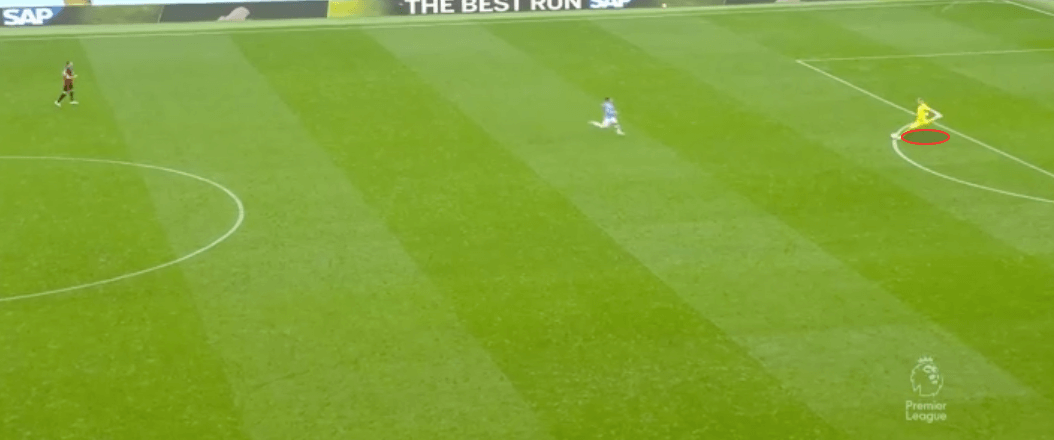
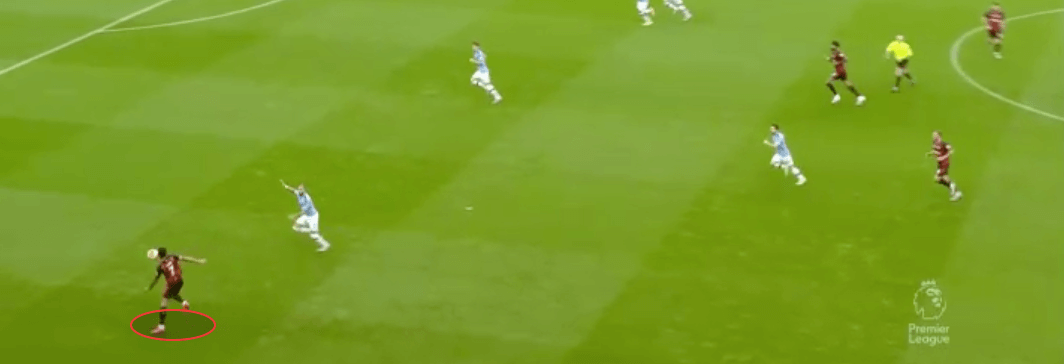
In this example, when faced with pressure from the opposition, Ramsdale’s long pass upfield isn’t just a hopeful ball onto the head of one of his strikers. Rather it’s an accurate, thought-out pass to Josh King, who’s open. He completes a 60+ yard pass with ease. This accuracy shows that he has the ability to find Sheffield United attackers’ head when needed.
However, he’s equally adept at using a chipped pass to find wide players. Sheffield United use width really well, their wing-backs and outside centre-backs often hugging the side-line. This means that his chipped pass will come in handy to advance his side up the pitch.
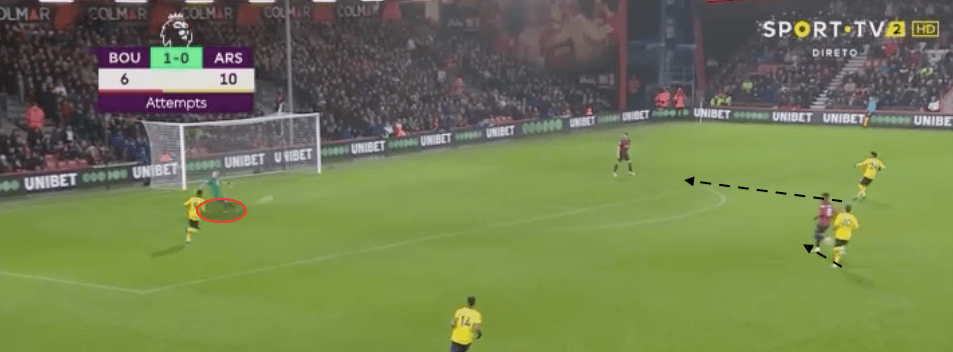
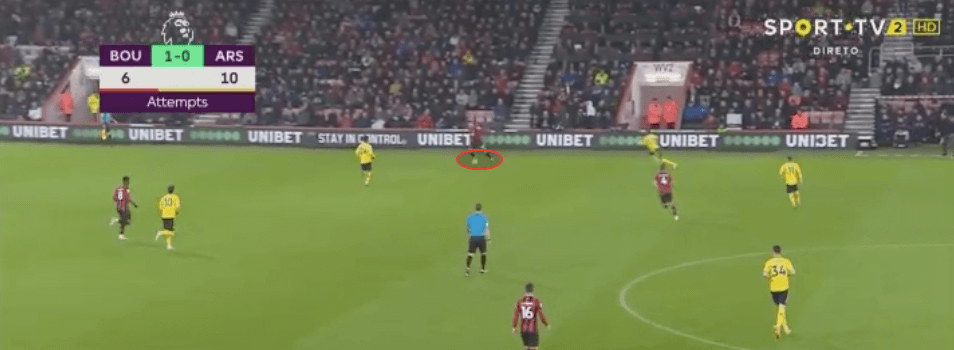
Here, against Arsenal, we can see how effective the chipped pass is when there are no option long or short. He spots his wide man in a lot of space, with no Arsenal men near him. He measures the chip to perfection and delivers a pass right to his teammate’s feet.
What does the youngster need to work on?
As we addressed earlier, Ramsdale does have a bad habit when it comes to dealing with central one-on-ones. And whilst it hasn’t affected him too much this past season, he will certainly need to improve on it.
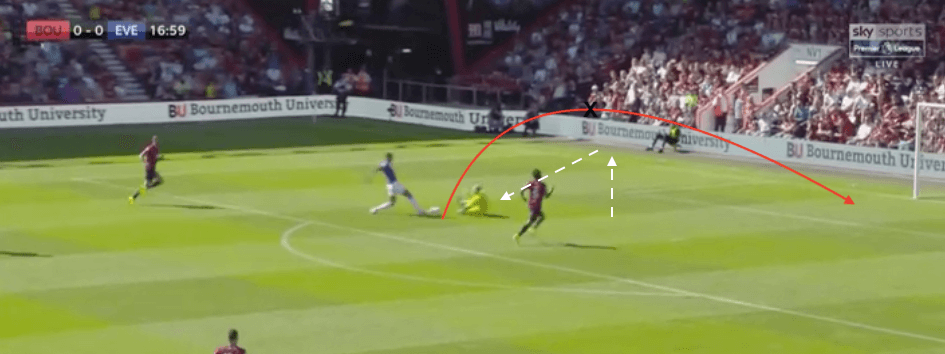

The optimum technique when facing a one-on-one from a central position is not too engage too far, allowing defenders to get across and put the attacker under pressure. When the attacker is about to shoot, the goalkeeper should spread himself as big as possible. In the two examples above, Ramsdale is too low to the floor, he often prefers diving at the ball, rather than blocking the shot.
Ramsdale’s technique leaves him open to being chipped because he’s so low to the floor. In the two images above, the red arrow shows how much space the attackers have to simply lift the ball over the keeper. More experienced strikers will easily take advantage of this. The young keeper must remain on his feet for longer, standing up tall.
Another problem that Ramsdale has is his lack of confidence to take and catch crosses and set-pieces. He isn’t the most active off his line. Only stopping 6.2% of crosses that he’s faced, which is lower than the league average. But when he does take action, he tends to punch rather than catch.
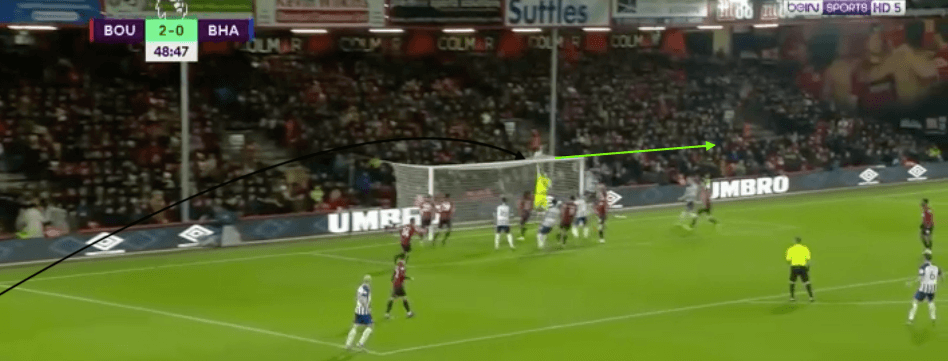
In the example above, Ramsdale is faced with a corner from the right. Although the ball is delivered in a central area and at a good height for the keeper, Ramsdale decides to punch. He’s under no pressure from the opposition, so it should be an easy catch that takes the pressure off his defence. His aerial win percentage is 82.61% which is below the league average.
Conclusion
This scout report has proven that Ramsdale is a great fit for Sheffield United and should cover their number one position for a number of years to come. With him being just 22-years-old, he will only get better. For such a young goalkeeper, his sense of positioning and therefore shot-stopping is very mature. Making him look like an experienced keeper. His mixed passing style will give his new team multiple options going forward too. If he can improve his one-on-one technique from central positions and his sweeping play, he is sure to be a candidate for the England number one jersey in the future.





Comments